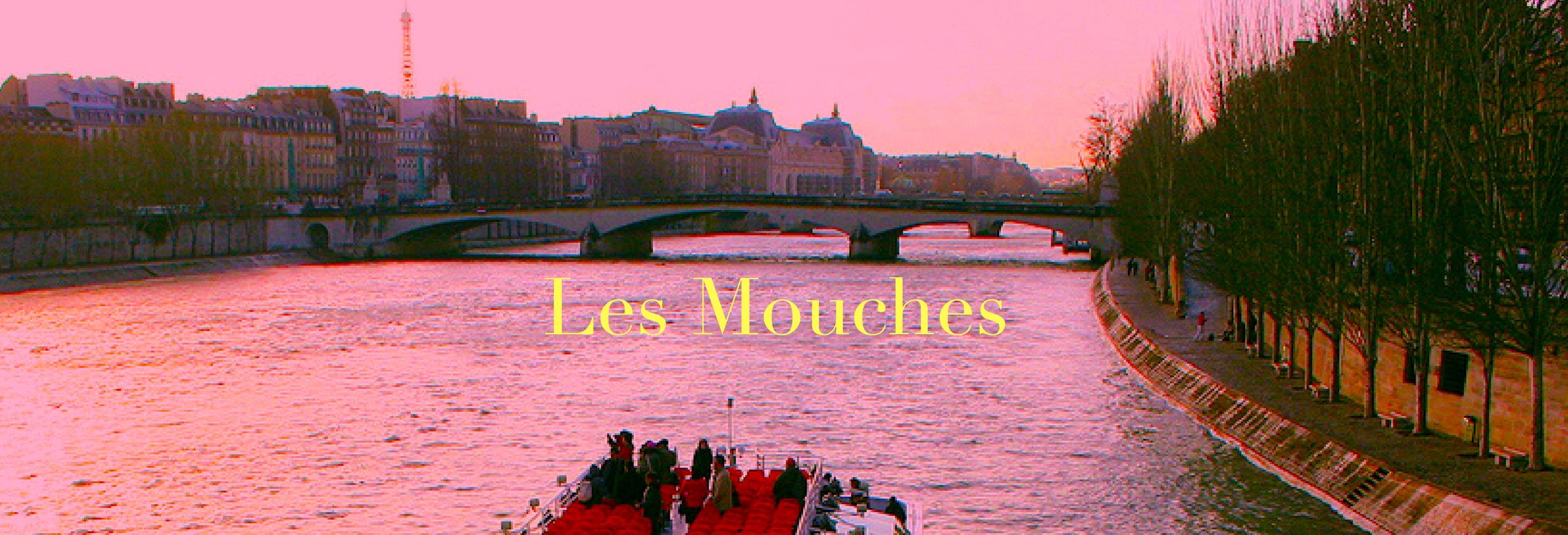The Ring 💍 Paris
Les Mouches
Ultralight Beam
Kenneth remembered being lifted several hundred meters from the ground while the city beneath him was strafed with millions of orange beams, some the diameter of a basketball, others the diameter of a hot air balloon.
He saw a dense point of orange light below him, emanating from the auditorium where he was giving his incoherent lecture. The point had about 40 or 50 spokes of orange light beaming upward and outward toward locations that were from several metres to several kilometres away. He remembered seeing a man with orange hair in the audience as he was trying to say something about the probability of predicting the future. He now realized that the spokes of light were emanating from the man’s head.
After about ten seconds, Ken’s body fell softly toward the river. He landed in a river boat. Looking around him, he saw tangerine trees and marmalade skies. Without having paid the embarkation fee, he had become a tourist on a bateau mouche.
Le Pont Notre-Dame
Madame Dupont remembered standing on le Pont Notre-Dame in 1945, listening to the deep sound that reverberated through the air from the massive bell-towers of the nearby cathedral. It was Sunday morning and she had just come from Mass with her adoptive mother. She had been in Paris for three months now, and she was just getting used to the idea that this was her new home, her new language, her new culture. Her parents had died sometime during the last five years, she didn’t know when. All she knew for sure was that it was her eleventh birthday today. She looked up at her mother, but she was gone.
Madame Dupont also remembered that she was deeply in love. She looked over at her husband Conrad, who had just said something witty about Voltaire’s Clockmaker God. She heard him ask, I wonder if Voltaire really knew what time it was?
She squeezed his hand but all she made was a fist. All that was left of him was the reverberation of the bell sounding in the clouds, drifting outward from the Earth into Pascal’s Void. She saw orange beams all over the city, beaming in every direction across the sky.
She remembered thinking that at one time you might have been able to stand on the bridge and see the cathedral. But it was hidden now by buildings, by time, and by the existential brutality of Sartre. She thought about his play, Les Mouches, and wondered what it meant in a context where the old gods of Greece and Rome hadn’t managed to save anyone. Who knows where Sartre’s hero Oreste was now, having left Argos and having freed himself from the tyranny of Zeus? She wondered if the flies remained, and if the cattle still resented them.
She also wondered if Conrad had been beamed up somehow, somewhere. Yet she knew this couldn’t be, since she had seen his rugged face looking blankly upward from its coffin. In the orange light between worlds she told him that she didn’t want to live anymore. Not without him. She swore that she would never frown at churchlight again. Desperate for an ultralight beam, she prayed to Jesus: Lift me from this Vale of Tears. Lift me up into the Sky, so that I can be in the arms of my husband. I’m tired of hanging on the cross of this world!
But the orange beam suspending her brought her back down to what the priests would have called The Fallen World. Ce bas monde. Ah, she said out loud, que c’est fatiguant!
She was once again standing half-way across the Bridge of Notre-Dame, the oldest bridge in Paris.
The Bridge was destroyed by the Normans and rebuilt numerous times, reaching its final form in 1914, after blocking river traffic so badly that it was nick-named the Devil’s Bridge.
On the arches she saw the stoned heads of Dionysus, but she wondered what good he would do them against a power that could beam people up and down like flies. This reflection recalled to her mind one of Conrad’s favourite quotes from King Lear: “We are to the gods as flies to wanton boys; they kill us for their sport.”
She thought to herself, The Devil knows what’s really happened to her city and to that place they used to call France.
💍
Next: 💍 At First Sight
Contents - Characters - Glossary: A-F∙G-Z - Maps - Storylines






